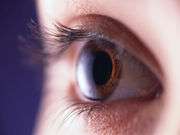Dry eye disease often diagnosed in alopecia areata

(HealthDay)—Many patients with alopecia areata are diagnosed with dry eye disease (DED), and patients should be referred for an ophthalmic evaluation, according to a study published in the November issue of the International Journal of Dermatology.
Can Ergin, M.D., from the Dışkapı Yıldırım Beyazıt Education and Research Hospital in Ankara, Turkey, and colleagues examined tear function and ocular surface pathologies in alopecia areata. Thirty-two patients and 20 age- and sex-matched controls were enrolled in the study.
The researchers found that, compared with the control group, the patient group had significantly higher ocular surface disease index questionnaire and corneal staining stage test scores and lower tear break-up time test scores (P < 0.05). Eighty-four percent of patients and 15 percent of controls were diagnosed with DED (P < 0.01). T-cell mediated autoimmunity had a prominent role in both alopecia areata and DED etiopathogenesis.
"We think that inflammatory mechanisms causing alopecia areata may trigger DED or vice versa," the authors write. "All patients with alopecia areata should be referred to an ophthalmologist for the evaluation of DED and other possible eye pathologies."
More information:
Abstract
Full Text (subscription or payment may be required)
Copyright © 2015 HealthDay. All rights reserved.



















